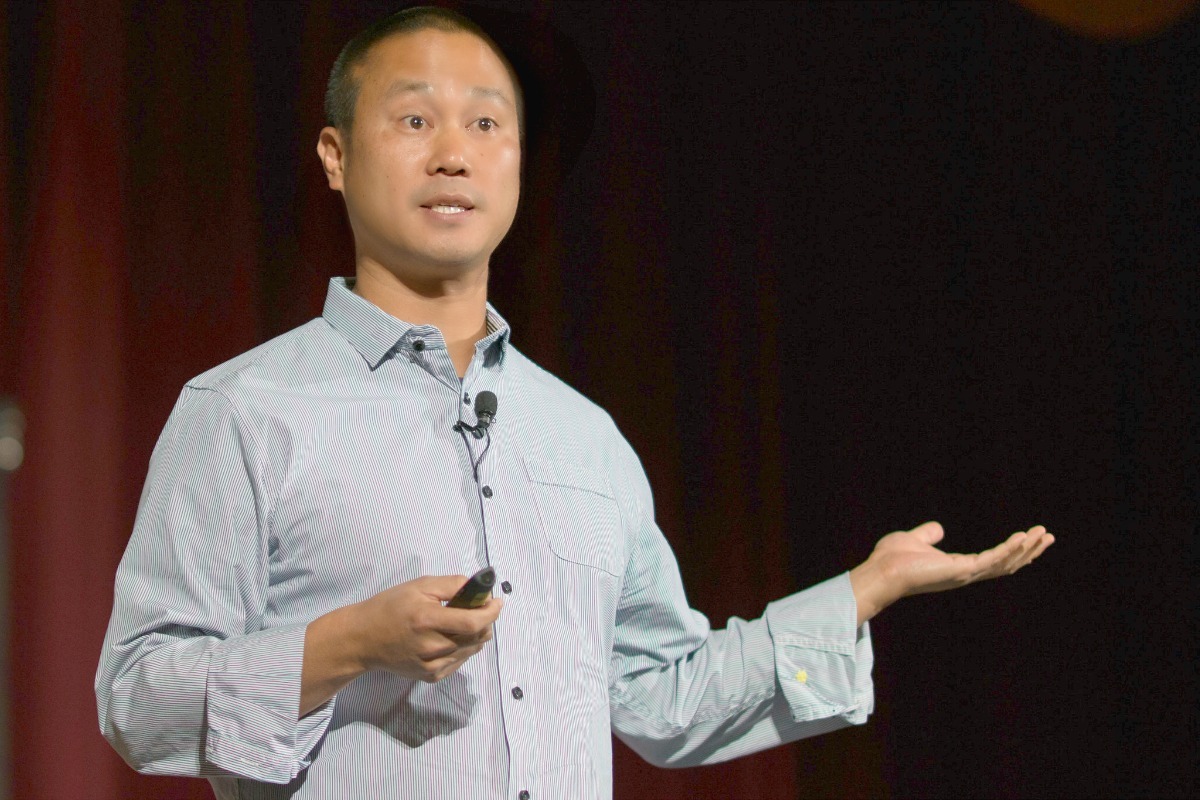The impact of Tony Hsieh
Scott Thompson shares the impact of Tony Hsieh on modern business, customer interactions, and Stories Inc. And, he honors Hsieh’s memory.
I was shocked and saddened to hear that Tony Hsieh passed away at the age of 46 this past weekend. Hsieh has always been one of my business heroes, and I even got to meet him briefly in 2011. His philosophies have had an influence on several Stories Inc. principles.
There’s a lot to learn from Tony Hsieh’s approach to business—and I highly recommend his book Delivering Happiness. However, the biggest takeaway for me was how he viewed customer interactions.
A long-term approach to customer relationships
Hsieh wasn’t concerned with maximizing profit for every single Zappos customer transaction. Instead, he viewed each interaction as an opportunity to build a lifelong relationship with a customer.
Here are some examples of how Zappos prioritized lifelong customer relationships over short-term profits:
Phone number front and center
A lot of web-based companies hide their phone number and push people to reach out to them online (if at all). There’s one big reason for this: fielding customer support phone calls is much more expensive than other lower-touch interactions. Notably, Zappos made sure their customer support phone number was front and center on every webpage. They welcomed the higher-touch (and more expensive) way of supporting customers. Hsieh saw a phone call as an opportunity for his colleagues to delight Zappos customers.
No measurement of customer service call times
Fielding customer support calls is expensive. So, most companies try to minimize the length of service calls. That means, they track call lengths for representatives and incentivize reps to get through as many calls as they can in a day. However, that’s not the case for Zappos: they don’t track call times for customer service calls. Instead, representatives are empowered to stay on the line for as long as is needed to delight the customer. Famously, the record for longest Zappos customer service call was, at one point, seven and a half hours!
A pioneer in free shipping and returns
Many companies offer free shipping and free returns these days, but very few did when Zappos started doing it. In fact, I remember being amazed when my roommate ordered a pair of shoes from Zappos in 2005 and returned them for a different size without paying anything in shipping. Free shipping is expensive for a company like Zappos (especially when no competitors were doing the same thing), but wowing customers in that way made it well worth it.
As for the ROI of taking the expensive approach to customer service? “Just because you can’t measure the ROI of something doesn’t mean you shouldn’t do it,” Hsieh once said. “What’s the ROI of hugging your mom?”
The impact of Tony Hsieh
Tony Hsieh was an inspiration for many different people: entrepreneurs, culture leaders, business leaders, HR practitioners, and more. He brought innovative ideas to the people side of a business, like paying people not to join Zappos after they’ve made it through the hiring process. He believed that serendipitous “collisions” between people in different parts of the organization was a big driver of innovation. So, he moved Zappos HQ to downtown Las Vegas, where those collisions would be more common in the community.
Applying Tony Hsieh’s philosophies at Stories Inc.
His ideas and principles influenced Lauryn and me as we built Stories Inc. As I mentioned above, the impact of Tony Hsieh goes way beyond his approach to customer relationships. Here are some tangible examples of customer-centric Stories Inc. policies that I’d like to think Hsieh would agree with:
Unlimited rounds of feedback and no time constraints
Many creative vendors limit the number of rounds in which clients can give feedback on created content. That’s not the case at Stories Inc.—we allow unlimited rounds of feedback. We genuinely want clients to be thrilled with every piece of content we create, and to achieve that, we’re willing to eat the cost of additional feedback rounds to get to that point. (Fortunately, our expertise means we quickly get a good grasp of what clients are looking for, so clients rarely have to take advantage of this policy.)
Similarly, we don’t hold clients to strict timelines. If a client needs more time to get back to us with content feedback, for example, there’s probably a good reason for it. This has been especially true during the pandemic, which has forced everyone to rethink their work.
Client ownership of content
At Stories Inc., our clients own all of the content we create for them, and since they own it entirely, they’re free to do whatever they want with it. That’s not always the case for creative vendors. Some hold the content hostage by restricting it to a distribution channel that the vendor owns and of course charges for. At Stories Inc., we ignore that potential revenue opportunity because we don’t believe it’s in the best interests of our clients. Content shouldn’t be restricted to one channel. We believe great content should be included in as many channels as makes sense for it — and edited as needed so that it makes sense in even more channels.
Bonus content
Whenever we have a great story on the cutting room floor (and have the bandwidth), we try to surprise our clients with free pieces of post-produced bonus content from their storyteller footage. There are very real costs we incur by doing this, but it’s worth the expense to delight our customers in this way.
In memory
In addition to inspiring so many culture leaders and those building companies, like us, Tony Hsieh seemed like a genuine, down-to-earth, caring person. The world is worse off without him.
Photo credit: Nan Palmero via Flickr Creative Commons

